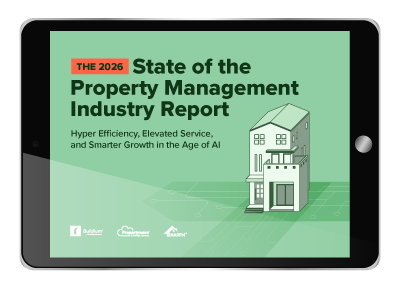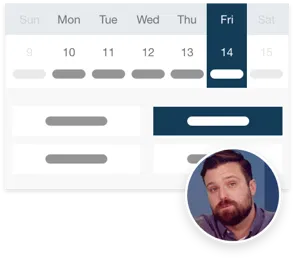As a property manager, one key metric you’ll monitor is the vacancy rate. It’s an important metric that can make a significant impact on how you manage your portfolio and its profitability.
In this guide, we’ll explore what the vacancy rate is, why it matters, and how you can use it to improve your property management strategies. Whether you’re new to the industry or want to sharpen your skills, this blog offers the information you need to make informed decisions.
What Is Vacancy Rate?
A vacancy rate measures the percentage of rental units that are currently unoccupied. It helps property managers assess how well their property is performing in terms of tenant occupancy.
To calculate the vacancy rate, you need two things:
- The number of vacant units in your property.
- The total number of units in your property.
Once you have these numbers, you can calculate the vacancy rate using this formula:
Vacancy Rate (%) = (Number of Vacant Units / Total Number of Units) × 100
For example, if you have 100 units and 10 are vacant, the vacancy rate would be:
Vacancy Rate (%) = (10/100) x 100
This means 10% of your units are unoccupied.
Regularly calculating the vacancy rate helps you track occupancy trends and adjust your management approach as needed.
Why Vacancy Rate Matters
The vacancy rate plays a significant role in your property’s financial health and operational efficiency. Here’s why it matters:
- Revenue and Profitability: Vacant units represent lost income. A higher vacancy rate reduces the revenue your property generates. Keep this rate low to maintain a steady cash flow.
- Tenant Retention and Market Demand: A high vacancy rate may signal that tenants are leaving or that demand in the area is low. You might need to revise your marketing efforts or improve the appeal of your property.
- Operational Efficiency: A high vacancy rate could point to issues in property management, such as poor tenant communication or slow maintenance responses. Monitoring vacancy rates lets you spot and address these inefficiencies.
- Pricing Decisions: The vacancy rate can help inform your pricing strategy. A high vacancy rate might mean your rental prices are too high for the market. If vacancy rates are low, you might have room to increase rents without losing tenants.
Ideal Vacancy Rate Range
What counts as a good vacancy rate? While the ideal number varies by location and property type, generally:
Healthy Vacancy Rate: A vacancy rate between 4% and 7% is ideal in many markets. This suggests that tenants move in and out at a balanced pace. It shows your property is competitive but not so full that you’re losing out on potential income.
High Vacancy Rate: A vacancy rate above 10% could signal problems. It may mean poor tenant retention, ineffective marketing, or low demand for your property. A high vacancy rate can lead to significant revenue losses, so take action quickly.
Low Vacancy Rate: While a vacancy rate under 3% might seem ideal, it can indicate that your property is underpriced or that you’re not paying enough attention to tenant turnover. If the vacancy rate is too low, you might not be maximizing revenue or addressing potential issues with your property.
Consider comparing your vacancy rate to the local market to understand whether your rate is competitive.
Factors Affecting Vacancy Rates
Several factors can impact your vacancy rate. Some are beyond your control, while others you can influence. Here are the key factors:
Local Market Conditions
The supply and demand in the local rental market can drive vacancy rates up or down. If there’s an oversupply of rental properties or low tenant demand, your vacancy rate may rise. Conversely, in areas with high demand, your vacancy rate may remain low.
Property Location
Properties in sought-after areas, such as those near schools, universities, or business districts, often have lower vacancy rates. Properties near transportation links or amenities, such as parks or shopping centers, tend to attract tenants more quickly.
Property Condition and Appeal
A well-maintained property with modern features will typically have lower vacancy rates. Properties that need repairs or are outdated may struggle to retain tenants, which can lead to higher vacancy rates.
Tenant Demographics and Demand
Understanding the preferences of your target tenant group is important. Whether you’re catering to families, young professionals, or students, knowing their needs can help reduce vacancy times and improve tenant retention.
Strategies to Improve Vacancy Rates
Though some factors influencing vacancy rates are outside your control, you can apply several strategies to fill vacancies faster. Here are practical actions you can take:
1. Enhance Property Marketing
Make your property visible by advertising on multiple platforms, such as rental websites, social media, and local listings. Use high-quality photos and detailed descriptions to showcase your property’s features.
- Explore Buildium’s marketing tools
- Check out tailored property management marketing services from Goodjuju and Upkeep Media
2. Improve Property Maintenance and Curb Appeal
First impressions count. Keep your property clean, well-maintained, and visually appealing. Simple upgrades, such as fresh paint, landscaping, or fixing broken fixtures, can make a big difference in attracting tenants.
3. Offer Incentives
Incentives can motivate potential tenants to sign leases. Consider offering move-in specials, such as discounted rent for the first month or free parking. These perks can help make your property more attractive in a competitive market.
4. Adjust Rental Pricing
If your vacancy rate is high, reassess your rental prices. You might want to lower them slightly or offer flexible lease terms to make your property more appealing. Stay informed on local market trends to adjust your prices accordingly.
5. Focus on Tenant Retention
Keeping current tenants happy is just as important as attracting new ones. Maintain open communication, address maintenance issues promptly, and create a positive living environment to encourage long-term leases.
- Explore Buildium’s Resident Center portal and dedicated mobile app for tenants
Frequently Asked Questions
How can I advertise my rental property effectively?
To attract tenants, advertise on multiple platforms such as rental websites, social media, and local listings. Showcase your property’s features using high-quality photos and detailed descriptions.
What should I do to improve property appeal?
Enhance your property’s appearance with simple upgrades such as fresh paint, landscaping, and fixing broken fixtures. Maintain cleanliness and ensure the property is visually appealing to leave a strong impression on potential tenants.
How can I keep current tenants happy?
Maintain open communication with tenants and promptly address maintenance issues. Create a positive living environment to encourage long-term leases and reduce vacancy rates.
Read more on
